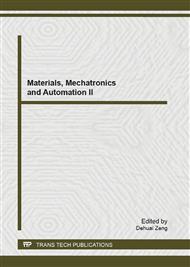p.581
p.586
p.591
p.597
p.603
p.608
p.612
p.618
p.624
Effects of Inner Corrosion Defects Size on the Surface Strain of Oil and Gas Pipelines
Abstract:
Inner corrosion defects have great effects on the life and safety of the oil and pipelines. To predict the safety by the surface strain and stress condition, ANSYS software was applied to analyze the effects of the inner corrosion defects size (diameter and depth) on the surface strain and stress value. The combined effects of defect diameter and depth on the circumferential direction strain of pipeline were obtained. The simulation results indicate that there is a linear relationship between circumferential direction strain and the defect diameter, an exponential relationship between circumferential strain and defect depth. Furthermore, there is a proportional relationship between the circumferential strain and the operating pressure of the pipeline. An empirical formula to calculate the surface strain used the defect diameter, depth and the operating pressure was developed based on the numerical simulation data. The experimental results verify the reliability and validity of this empirical formula for engineering prediction application.
Info:
Periodical:
Pages:
603-607
Citation:
Online since:
August 2013
Authors:
Price:
Сopyright:
© 2013 Trans Tech Publications Ltd. All Rights Reserved
Share:
Citation:


